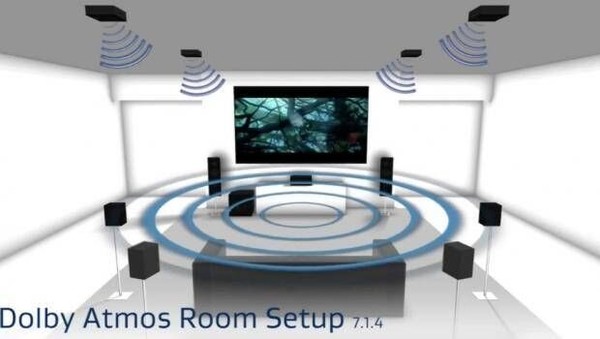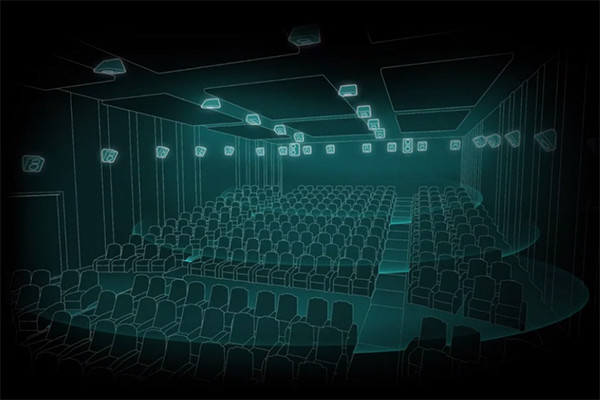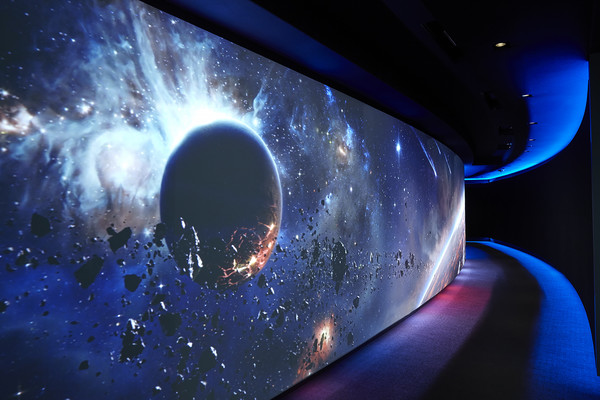If you are planning to buy a medium to high-end TV, you probably heard of Dolby Vision and Dolby Atmos. When HDR got hot on flat-screen TVs, the two new TV video standards came to a head. In this year's flagship TV brands have joined the support of both, especially as a Dolby Vision HDR technology, has become the standard configuration of flagship TV. In most of the impressions, Dolby corresponds to a high quality sound, such as Dolby Surround. In fact, Dolby is also closely related to high-quality picture quality and quality cinema. Dolby has begun to provide a number of sound and picture quality technologies for commercial cinemas, home theaters, and even ordinary flat-screen TVs and speakers. HDR can bring a higher brightness dynamic range to the TV, showing more detail in the bright and dark parts of the picture. However, HDR has spawned three formats, HDR-10, Dolby Vision, and HLG. Dolby Vision appeared at CES 2014 and is the earliest technical specification for high-dynamic range images released externally. However, it was HDR-10 that was first introduced to the market. It was not until 2016 that LG and Samsung’s flagship TVs joined the support of both. The HLG is the third HDR technology jointly developed by the British BBC and the Japanese NHK. Both Dolby Vision and HDR-10 store the HDR extension information of the video signal in metadata, which is equivalent to mapping the HDR metadata to the SDR model, and display it on the TV screen through decoding. HDR effect. The difference between the two is that HDR-10's metadata is static, while Dolby Vision uses metadata that is dynamically adjusted on a frame-by-frame basis. As for the two TV stations' research and development of the HLG, it is mainly aimed at the video broadcasting industry with limited broadband transmission. Instead of metadata, the signals are combined with SDR and HDR signals. Dolby Vision is different from the other two in terms of the status of the entertainment industry. The other two are only used for television video content, while Dolby Vision is not only used for television broadcasts, but also in theaters. Dolby Cinema has already overshadowed IMAX. The HDR-10 is built on the same core technology features as Dolby Vision, and Dolby Vision is backwards compatible with HDR-10, but the reverse is not. In terms of brightness, color and other parameters, there is not much difference between them, but HDR-10 only supports 10bit color depth, Dolby supports up to 12-bit, and has better picture hierarchy and detail performance. In addition, Dolby Vision also brings higher brightness: the brightness range that the human eye can observe is 10^5 cd/m2. The closer the TV peak brightness is to this value, the more pronounced the HDR effect will be. Richer color volume: High brightness plus wide color gamut and high color depth brings a more three-dimensional color expression, and can express the color in the extreme brightness conditions more clearly, such as the colorfulness of the fireworks and the night view of the city. There is also a richer color hierarchy under normal brightness. Earlier this year, LG released the world’s first OLED TV with both Dolby Vision and Dolby Atmos. Its impressive audition effect was amazing. This is the first time that Dolby Atmos technology has appeared on the TV. Before this, perhaps you have already experienced in the cinema. Dolby Atmos is different from the past 5.1 or 7.1 theaters, providing smoother, more dense, more surround sound effects, allowing you to watch movies more enjoyable, deeper experience of the director's creative motives, and gain more More fun. With Dolby Atmos's blessings, the dialogue in the movie has a sense of direction, and various sound effects are passed into your ears from places of varying heights, as if you were in a real scene. If there is a bird passing right and left in the picture, even if you close your eyes, you can clearly feel the traces of birds flying over. Accurate sound field positioning is Dolby Atmos' biggest unique skill. Nowadays, this technology has made it possible for the home environment to experience cinematic effects. Later, some Internet TV manufacturers and domestic TV manufacturers also introduced this technology into their own television. However, the Atmos used in home Atmos and theaters are still somewhat different. The cinema Atmos system is based on a 9.1-channel basic audio track and 128 effects audio tracks in real-time mixing, while the home Atmos system is based on 7.1-channel basic audio tracks and 24.1.10 audio spatial information synthesis. What kind of hardware facilities do Dolby Atmos achieve? The biggest difference between Dolby Atmos, which is currently used in theaters from 5.1 to 7.1, is that in addition to the speakers in the left, right, front, and back, the theater adds two to the top of the theater. Columns of speakers. Moreover, each speaker can also operate independently. As a result, the direction of the sound has a sense of direction. The effect of that kind of aircraft passing over the top of the plane is only what Dolby Atmos can do. Few people in the home environment transform the ceiling to add speakers. How does the home Atmos do top sound? Originally, there was a pair of speakers that passed the elevation design and transmitted the top sound through the roof to the audience's ears. So creating Dolby Atmos at home gives the impression that you want to prepare a particularly large number of speakers. Yes, generally, home Atmos has almost 10 speakers. Although Dolby Vision and Dolby Atmos have such excellent audition effects, its popularity is still a long way, just as the popularity of 3D movies. First of all, in terms of filming techniques, the creators are required to make use of the expressive features of this technology and to use them in their own right rather than in the animal world. Second, the popularity of hardware devices in theaters or homes. Third, in the early stage of marketization, it is conceivable that many film and television companies will not be doing Dolby Vision and Dolby Atmos for the effect of the movie itself, but will make the fare a bit higher. Together to label. Hopefully, the time for experiencing the cinematic scene closest to the real world will soon come.
For the Oil Immersed Aouto Transformer, we can produce voltage of 220kV, 330kV and 500kV and capacity upto 460MVA. We use the best quality of raw material and advance design software to provide low noise, low losses, low partial discharge and high short-circuit impedance for Power Transformer.
Our power transformer are widely used in national grid, city grid, rural grid, power plant, industrial and mining enterprise, and petrochemical industry.
Power Plant Transformer,Auto Power Transformer,Auto Transformer,High Quality Auto Power Transformer Hangzhou Qiantang River Electric Group Co., Ltd.(QRE) , https://www.qretransformer.com




